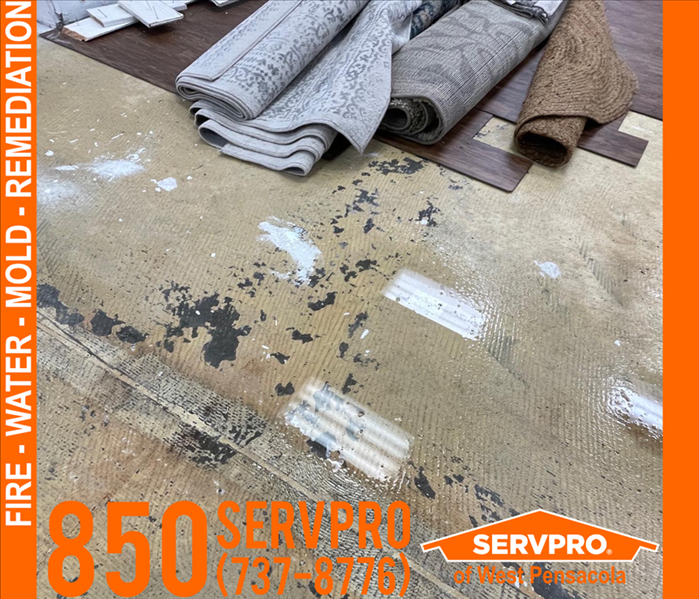Water Woes: How to Handle Flood Damage in Pensacola Homes
3/14/2024 (Permalink)
Living in Pensacola, Florida, brings many joys – the beautiful beaches, the vibrant culture, and the warm climate. However, it also comes with the risk of flooding due to its proximity to the Gulf of Mexico and its low-lying geography. Flood damage can wreak havoc on homes, causing immense stress and financial strain for homeowners. In this blog post, we'll explore the steps you can take to handle flood damage effectively and minimize its impact on your Pensacola home.
1. Safety First
Before you begin any cleanup or restoration efforts, ensure that you and your family are safe. If floodwaters are still present or if there is structural damage to your home, do not enter until it has been deemed safe to do so by authorities.
2. Document the Damage
Take photos and videos of the flood damage to your home for insurance purposes. Documenting the extent of the damage will help support your insurance claim and ensure that you receive the appropriate coverage for repairs and restoration.
3. Contact Your Insurance Provider
Notify your insurance provider as soon as possible to start the claims process. Be prepared to provide detailed information about the damage and any documentation you have gathered. Understanding your coverage and policy limits will help you navigate the claims process more effectively.
4. Mitigate Further Damage
If it is safe to do so, take steps to mitigate further damage to your home. This may include removing water, drying out affected areas, and boarding up windows or doors to prevent intruders or additional water from entering.
5. Hire professional flood damage restoration specialists
When you need flood damage restoration near you fast it can be a complex and challenging process that often requires specialized equipment and expertise. Consider hiring professionals who have experience in handling mold, water, and flood damage to ensure that your home is properly restored.
6. Remove Water and Debris
Pump out standing water from your home as soon as possible to prevent mold and mildew growth. Remove any debris or mud that may have accumulated inside or outside of your home to facilitate the drying process.
7. Dry Out Your Home
Use fans, dehumidifiers, and other drying equipment to dry out affected areas of your home thoroughly. This will help prevent mold growth and structural damage caused by excess moisture.
8. Clean and Disinfect
Thoroughly clean and disinfect all surfaces, furniture, and belongings that have come into contact with floodwaters. Use appropriate cleaning agents and follow recommended safety precautions to ensure that your home is safe and sanitary.
9. Dispose of Damaged Items
Dispose of any items that cannot be salvaged or safely cleaned, such as carpeting, insulation, and damaged furniture. Be sure to follow local regulations for disposal of flood-damaged materials.
10. Restore and Repair
Work with contractors and restoration professionals to restore your home to its pre-flood condition. This may involve repairing structural damage, replacing flooring and drywall, and repainting affected areas.
11. Take Preventative Measures
Once your home has been restored, take steps to prevent future flood damage. This may include installing flood barriers, elevating electrical systems and appliances, and landscaping to improve drainage around your home.
12. Stay Informed
Stay informed about flood risks in your area and take proactive measures to protect your home and family. Sign up for local alerts and monitor weather forecasts to stay prepared for potential flooding events.
Flood damage can be devastating, but with the right approach and resources, you can minimize its impact on your Pensacola home. By prioritizing safety, acting quickly, and seeking professional assistance, you can effectively handle flood damage and restore your home to its former glory.





 24/7 Emergency Service
24/7 Emergency Service
